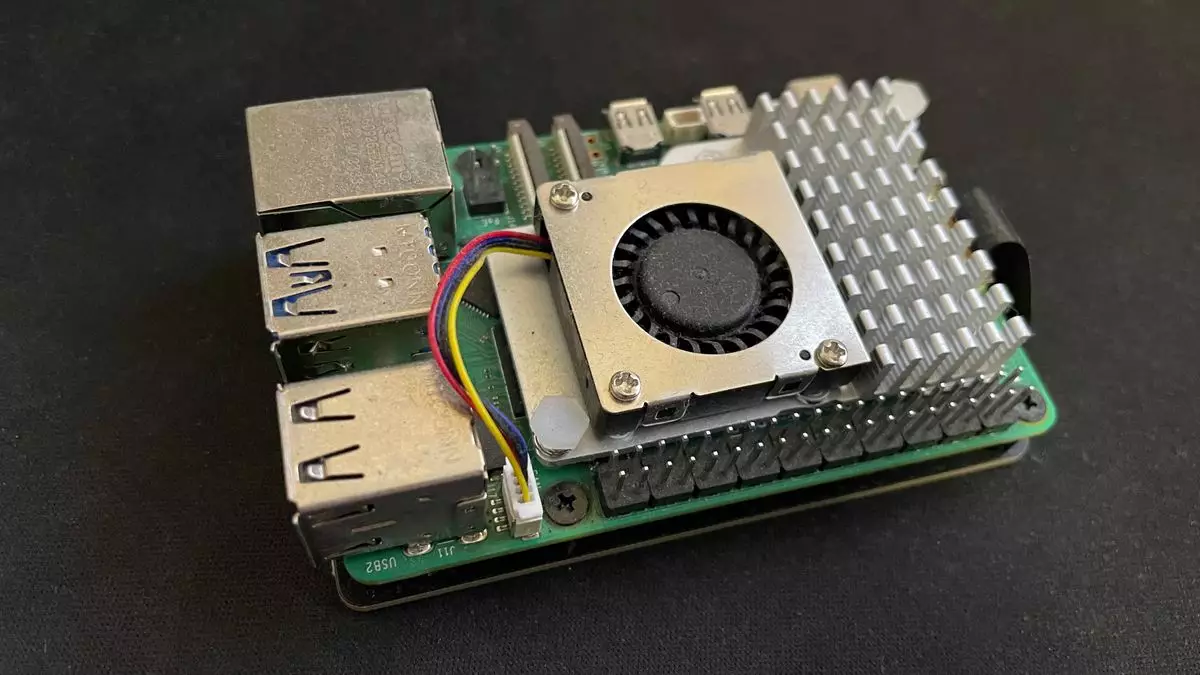The Raspberry Pi has long been a beloved tool for hobbyists, educators, and tech enthusiasts alike, known for its versatility and affordability. When the Raspberry Pi 5 debuted in 2023, it introduced several features that elevated its status, most notably the support for PCIe drives. This breakthrough has sparked excitement among users seeking to transform their compact single-board computer (SBC) into a more versatile machine, capable of handling tasks typically reserved for traditional desktop PCs.
The inclusion of PCIe support in the Raspberry Pi 5 marks a significant leap forward, especially considering that previous versions were notably limited by their IO capabilities. PCIe connectivity opens the door for various hardware enhancements, including the integration of high-speed SSDs that dramatically improve data transfer rates compared to traditional MicroSD cards. Initially, the lack of official PCIe SSD solutions left a gap that third-party manufacturers attempted to fill, which, while beneficial, complicated the upgrade process for less experienced users.
To address this need, Raspberry Pi Ltd has announced official SSDs paired with its M.2 HAT+ (Hardware Attached on Top), creating a cohesive and user-friendly ecosystem. This collaboration simplifies the connection process, as users no longer have to navigate the hurdle of compatibility issues with various third-party SSDs. When I explored Raspberry Pi 5’s capabilities, the potential to utilize SSDs for enhanced performance was quickly apparent.
In my hands-on experience with the Raspberry Pi 5, I was astounded by its performance, particularly when coupled with an active cooler. This combination enabled the unit to effectively handle a variety of everyday computing tasks. My experimentation included attempting to run games, such as Doom 3, which, while at low resolution, performed surprisingly well. Notably, this was groundbreaking for a device of such compact size. The only bottleneck I encountered was the reliance on a MicroSD card, which limited load speeds and overall data stability.
As I ventured into enhancing my Raspberry Pi’s speed, I turned to the Pimoroni’s NVMe Base and a Crucial P3 SSD as a solution. While this method improved performance, it came with added costs and required careful consideration of SSD compatibility, a demanding task for users who may not have the technical background to navigate the specifications. Had official SSD kits been available at that time, they would have provided a more straightforward and economical option.
Interestingly, Raspberry Pi 5 supports PCIe 3.0 even though it is officially limited to PCIe 2.0. By simply editing the configuration file, users can unlock this enhanced capability and potentially achieve even better performance. This intuitive approach to configuration makes it easier for hobbyists to experiment and customize their setups, revealing more power from their devices without complicated procedures.
The pricing of the new official SSDs makes them an attractive option. The 256GB model, priced at $30, and the 512GB alternative at $45 offer an accessible way for users to experience the benefits of an SSD upgrade. Given the specifications, including high read and write IOPS, these drives are poised to significantly improve user experiences across various applications, especially in gaming.
While gaming is a prominent use case for these enhancements, the advantages of incorporating SSDs into the Raspberry Pi 5 extend far beyond that realm. With the ability to run lightweight operating systems and applications more efficiently, users can also explore retro gaming options, install media centers, or even basic programming environments. The flexibility provided by SSD upgrades allows Raspberry Pi to adapt more seamlessly to individual user needs, making it a more compelling option for diverse projects.
The recent integration of official SSD solutions, combined with the potential for robust gaming experiences, reinforces the Raspberry Pi 5’s role as a genuinely capable micro-computer. The opportunity to host systems like RetroPie or Recalbox emphasizes the device’s versatility, catering to both modern gaming enthusiasts and nostalgic gamers alike.
The introduction of the Raspberry Pi 5, along with its PCIe support and official SSD capabilities, marks a pivotal moment for the platform. The transition from a modest learning tool to a formidable desktop alternative opens up new possibilities for both casual users and advanced hobbyists. With the right accessories, the Raspberry Pi 5 can truly bridge the gap between simplicity and high performance, continuing its legacy as a valuable tool in the world of technology.

